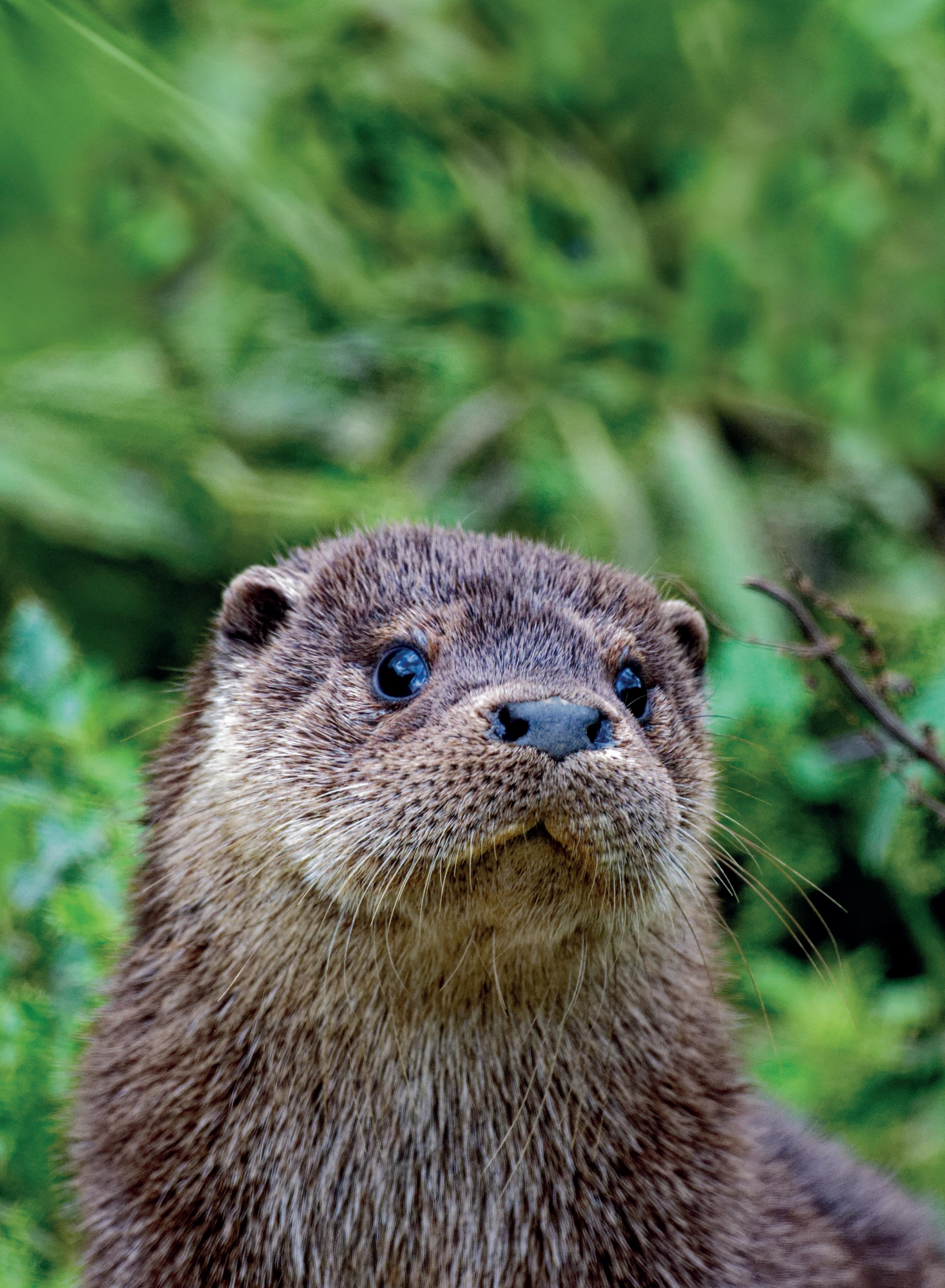

WILD DUBLIN
Exploring Nature in the City
Shortlisted for the Reading Association of Ireland Award
‘A vivid account of the urban flora and fauna …. words and pictures fuse seamlessly in this lively celebration of nature in Dublin’.
Irish Examiner
‘As readable and attractive a nature publication as I have seen, thoroughly researched and compiled … highly recommended.’
Village magazine
‘Beautifully produced and illustrated.’
Irish Mail on Sunday
‘Excellent book, generously illustrated, a terrific addition to the genre.’
Irish Independent
‘A lavish, splendid, colourful big book … equally accessible to adults and young people.’
Books Ireland
ÉANNA NÍ LAMHNA is a biologist, environmental and wildlife consultant, radio and television presenter, author and educator. Éanna has one of the most recognisable voices on Irish radio and has been an expert on RTÉ’s wildlife programme Mooney Goes Wild since it began in 1995. She has an honorary Doctorate in Science from the University of Galway and has also served as president of both the national environmental charity An Taisce and the Tree Council of Ireland. Éanna also writes a long-running, popular nature feature in the Irish Times. Originally from Louth, she now lives in Dublin. Éanna is the author of numerous wildlife books, including Our Wild World: From the Birds and Bees to Our Boglands and the Ice Caps, Wild and Wonderful: Around the World with Éanna, and Wonders of the Wild, all published by The O’Brien Press, and The Great Irish Biodiversity Book, published by Gill Books.
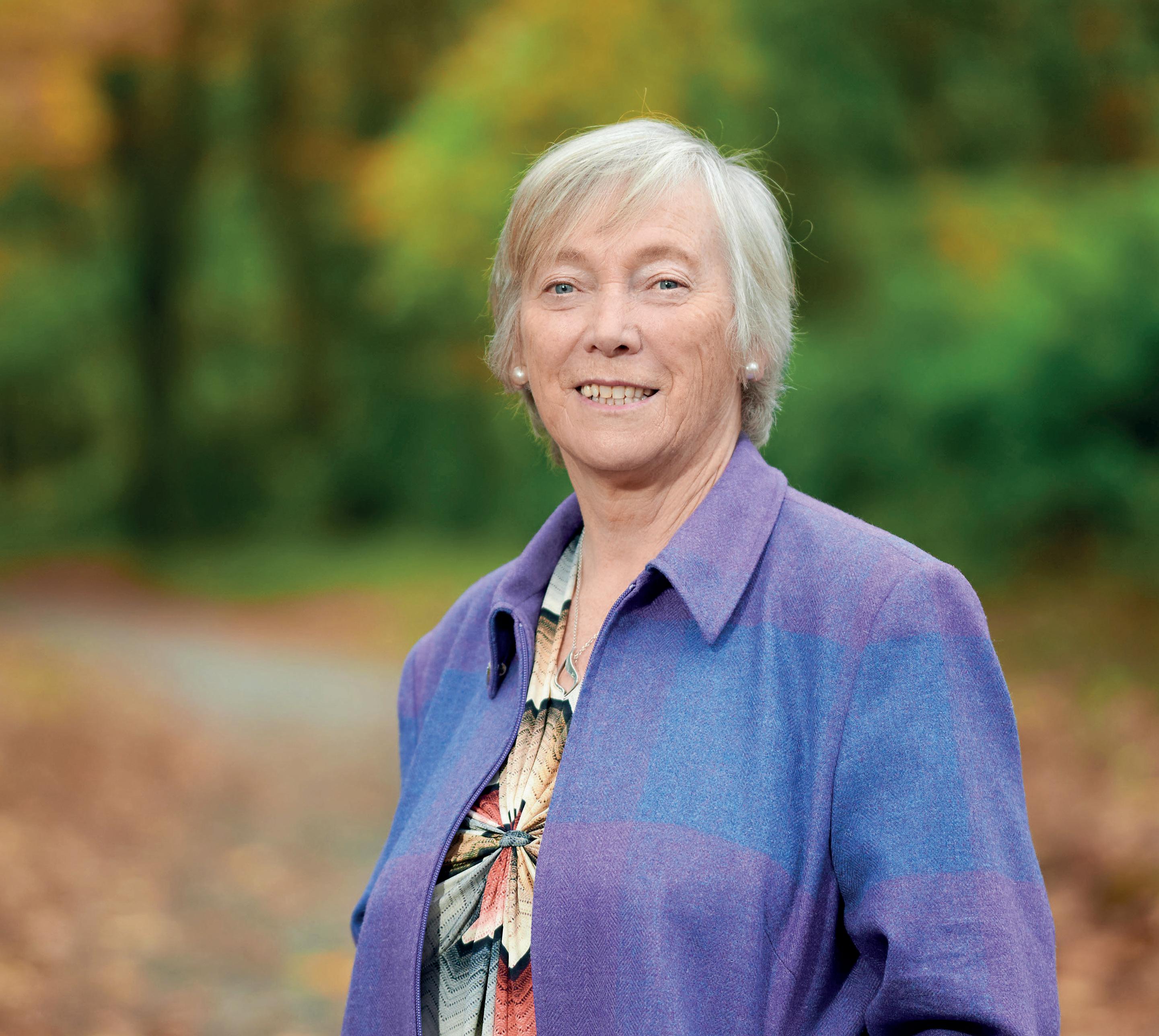
This edition first published 2025 by The O’Brien Press
First published in hardback in 2008 and in paperback 2009 by The O’Brien Press Ltd.
12 Terenure Road East, Rathgar, Dublin 6, D06 HD27, Ireland.
Tel: +353 1 4923333;
E-mail: books@obrien.ie
Website: obrien.ie
The O’Brien Press is a member of Publishing Ireland.
ISBN: 978-1-78849-474-8
Copyright for text © Éanna Ní Lamhna 2008, 2009, 2025
The moral rights of the author have been asserted.
Cover design by Emma Byrne.
Book design by Chris Rychter.
Front cover photograph of native Irish otter: Shutterstock.
Back cover photographs: (top) Shutterstock, (bottom left) Nigel Moyter, (bottom right) Phillip Duke.
Image on this page: Bull Island by Anthony Woods.
Imagery
Copyright for majority of photographs © Anthony Woods 2008, 2025
Copyright for illustrations © David Daly 2008
Additional imagery:
The author and publisher would like to thank the following for permission to reproduce photographs and illustrative material: p. 96 (bottom) Owen Beckett; p. 96 Paul Campbell; pp. 33, 57, 113 (bottom), 115 (bottom, right) Philip Duke; p. 108 Collie Ennis, pp. 11, 92 Ruth Hanniffy; p. 147 Stephen Lee; pp. 154–5 (top) Sean Kennedy; p. 72 Melinda Lyons; p. 129 Nigel Motyer; pp. 29, 64 (top), 29, 100 (both) Robert O’Leary; p. 13 map by Chris Rychter; p. 76 (right) Gareth Toolan; p. 93 (middle) Cong Yu; imagery was also supplied by: pp. 18, 27 Dublin City Council; p.13 Dublin Port Company; pp. 9, 21, 26, 84, 164 Fáilte Ireland; pp.16–7, 31(top), 62, 80–1 Shutterstock; p. 34 reproduced with permission from The Board of Trinity College, Dublin; p. 73 UCD Geography Dept, Tine Ningal and Gerald Mills; pp. 14–5 reproduced with permission from Ordnance Survey Ireland; pp. 24–5, 38–9, 41, 82–3, 122–3 (all maps) Design Image.
The author and publisher have endeavoured to establish the origin of all in-copyright images. If any involuntary infringement of copyright has occurred, sincere apologies are offered, and the owners of such copyright are requested to contact the publisher
All rights reserved. No part of this publication may be reproduced or utilised in any form or by any means, electronic or mechanical, including for text and data mining, training artificial intelligence systems, photocopying, recording or in any information storage and retrieval system, without permission in writing from the publisher.
8 7 6 5 4 3 2 1 29 28 27 26 25
Printed by EDELVIVES, Spain.
The paper in this book is produced using pulp from managed forests.
To the best of our knowledge, this book complies in full with the requirements of the General Product Safety Regulation (GPSR). For further information and help with any safety queries, please contact us at productsafety@obrien.ie


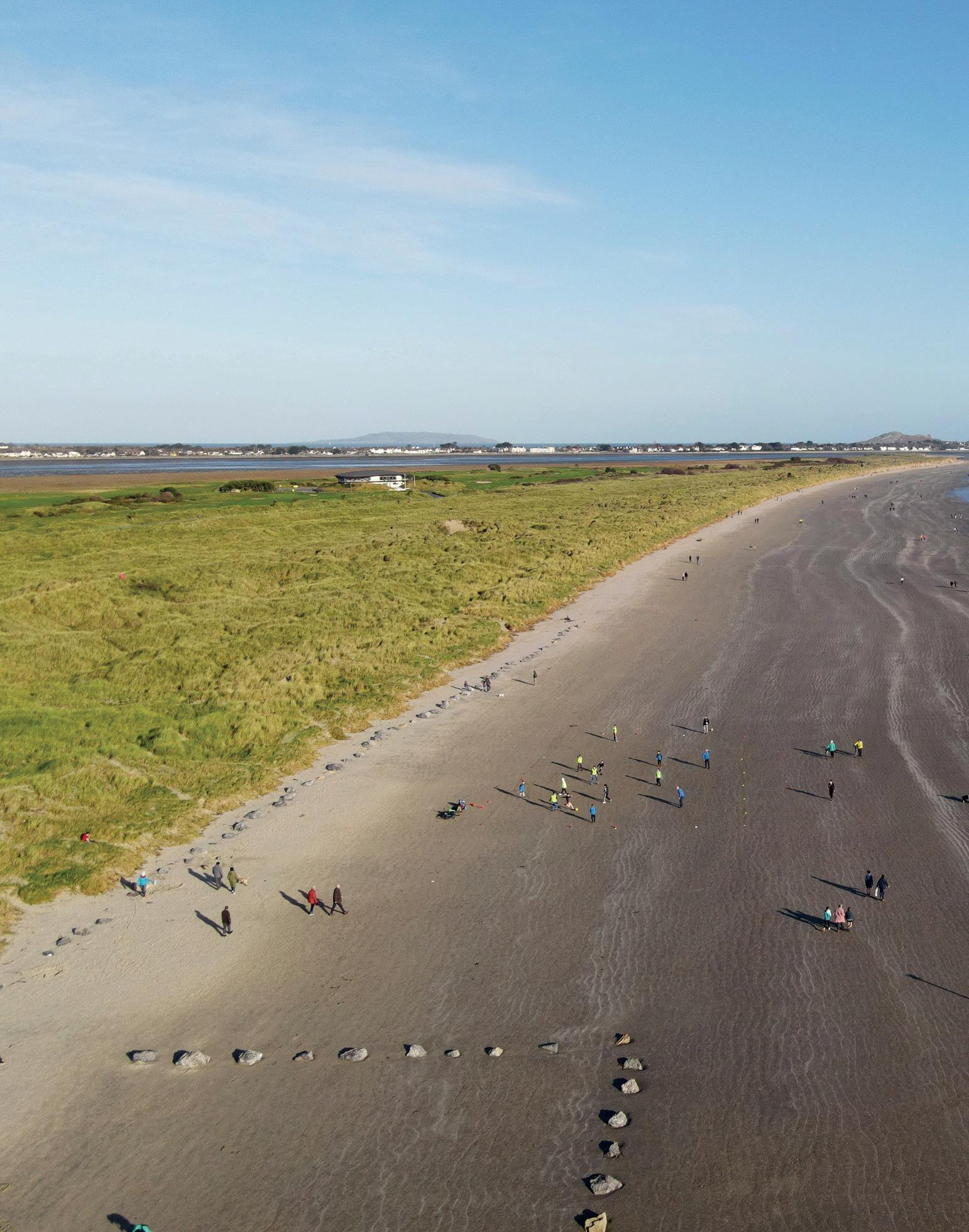


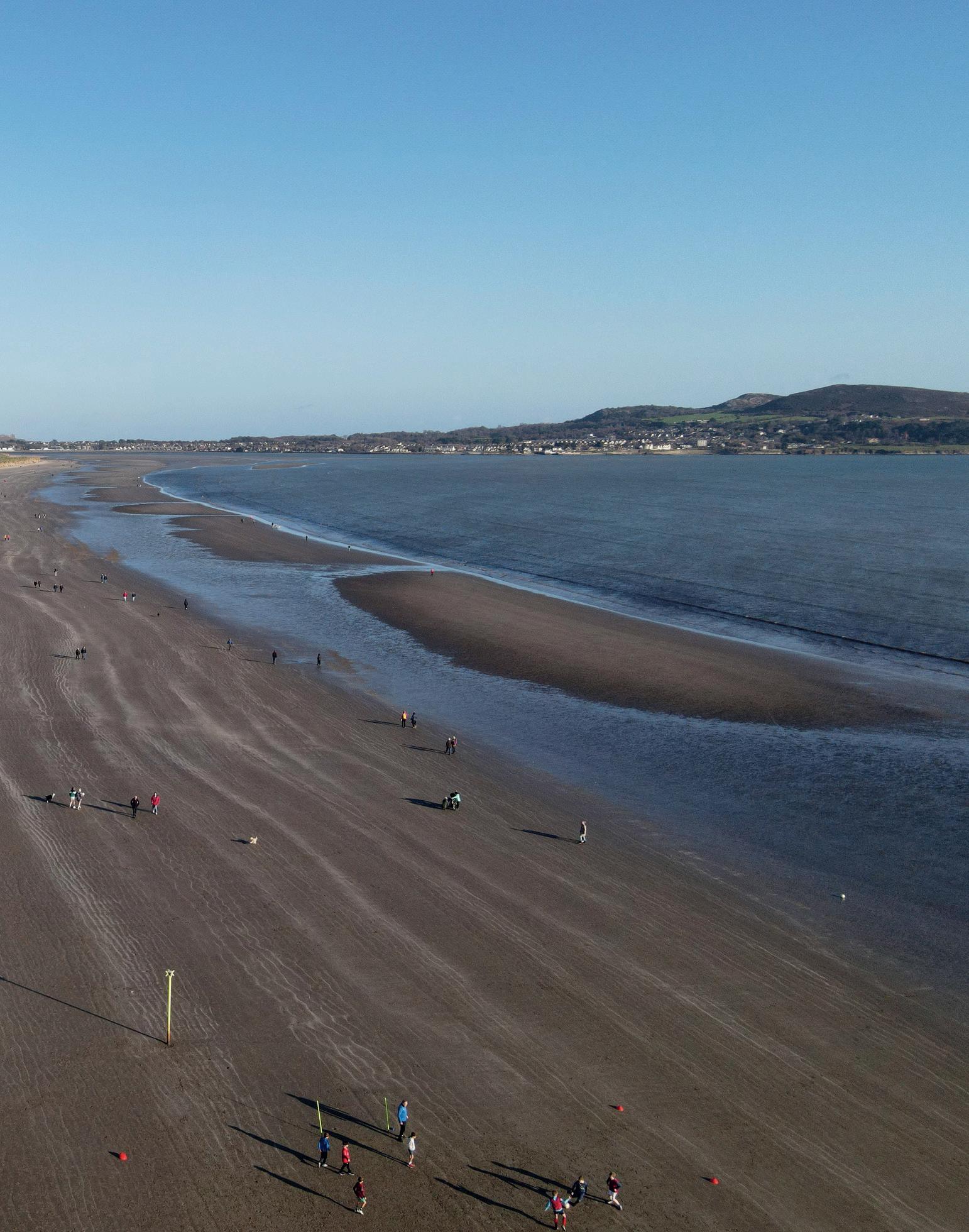
I dedicate this book to Richard Collins, my friend and colleague.
To my dearest Amanda – thank you for all your support. ANTHONY WOODS
ÉANNA NÍ LAMHNA
ACKNOWLEDGEMENTS
I would like to thank the many people who helped me with this book. Niall Hatch of Birdwatch Ireland was generous with data and anecdotes. Eric Dempsey shared his knowledge of unusual bird sightings. Richard Collins gave swan data and checked the veracity of the information. Tom Hayden provided information on Dublin’s mammals, particularly the Phoenix Park deer. John Harding accompanied me enthusiastically on my journeys by foot and bike. I wish to acknowledge the help given by Dublin City Council with all editions of the book: Leslie Moore, Head of Parks, Biodiversity and Landscape Services, Paula McGrane, Dublin Bay Biosphere Coordinator, Bernard Brady, Senior Executive Landscape Architect, and biodiversity officers Kelly Mara, Astrid Lynn, Lorraine Bull, Siobhán Egan and Mairéad Stack, who were unfailing in their helpfulness. Thanks also to Terry Doherty, National Parks and Wildlife Service, and to Anne Murray, Biodiversity Officer, Dún Laoghaire-Rathdown and Rosaleen Dwyer, former Biodiversity Officer, Dún Laoghaire-Rathdown.
Help from the following is also gratefully acknowledged: Tina Aughney, Pat Corrigan, Eamon de Buitléir, Terry Flanagan, Billy Flynn, Maureen and Noreen McGuinness, John McLoughlin, Phil O’Malley, Michael O’Meara, David Wall and Ken Whelan.
Particular thanks must go to Robert O’Leary who not only generously provided me with lovely wildlife photographs but also introduced me to his photographer colleagues who provided further images.
Síne Quinn did Trojan work editing the first edition; David Daly did the beautiful drawings and Keith Barrett of Design Image designed the maps for the first edition. The cover for this edition was designed by Emma Byrne, and the inside book design is by Chris Rychter.
Acknowlegements are also due to the following for additional photography for this edition: Owen Beckett, Melinda Lyons, Nigel Motyer, Robert O’Leary, Gareth Toolan, Cong Yu sourced by Dublin City Council; and other photographers who kindly supplied images: Paul Campbell, Philip Duke, Chris Fusco, Ruth Hanniffy, Stephen Lee, Cong Yu. In addition, imagery was supplied by Fáilte Ireland and Shutterstock. Thank you all.
ÉANNA NÍ LAMHNA
Thanks to Derek Collins, for coming out on cold nights and windy days in pursuit of pictures. Thanks to Hillary Knox for the tea, biscuits and badgers. Thanks to Richard Collins for showing me the adventurous way to see bird colonies. Thanks to Paul and Mary Clynch for the Mousecapades. Thanks to Pat Corrigan on Bull Island and all other Park and Wildlife Rangers for their advice and help, and to the UCD Fawning team in the Phoenix Park.

ANTHONY WOODS
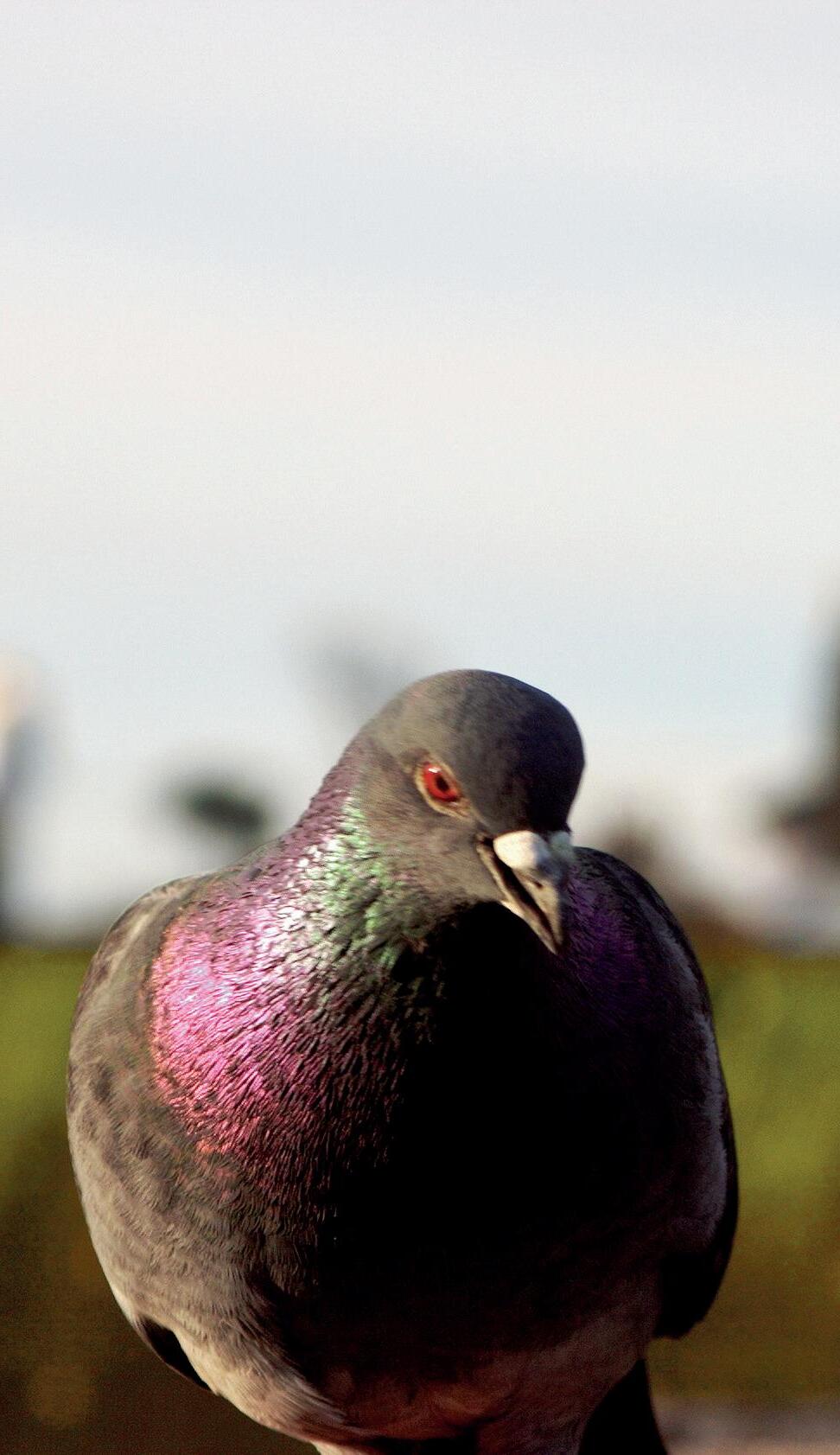
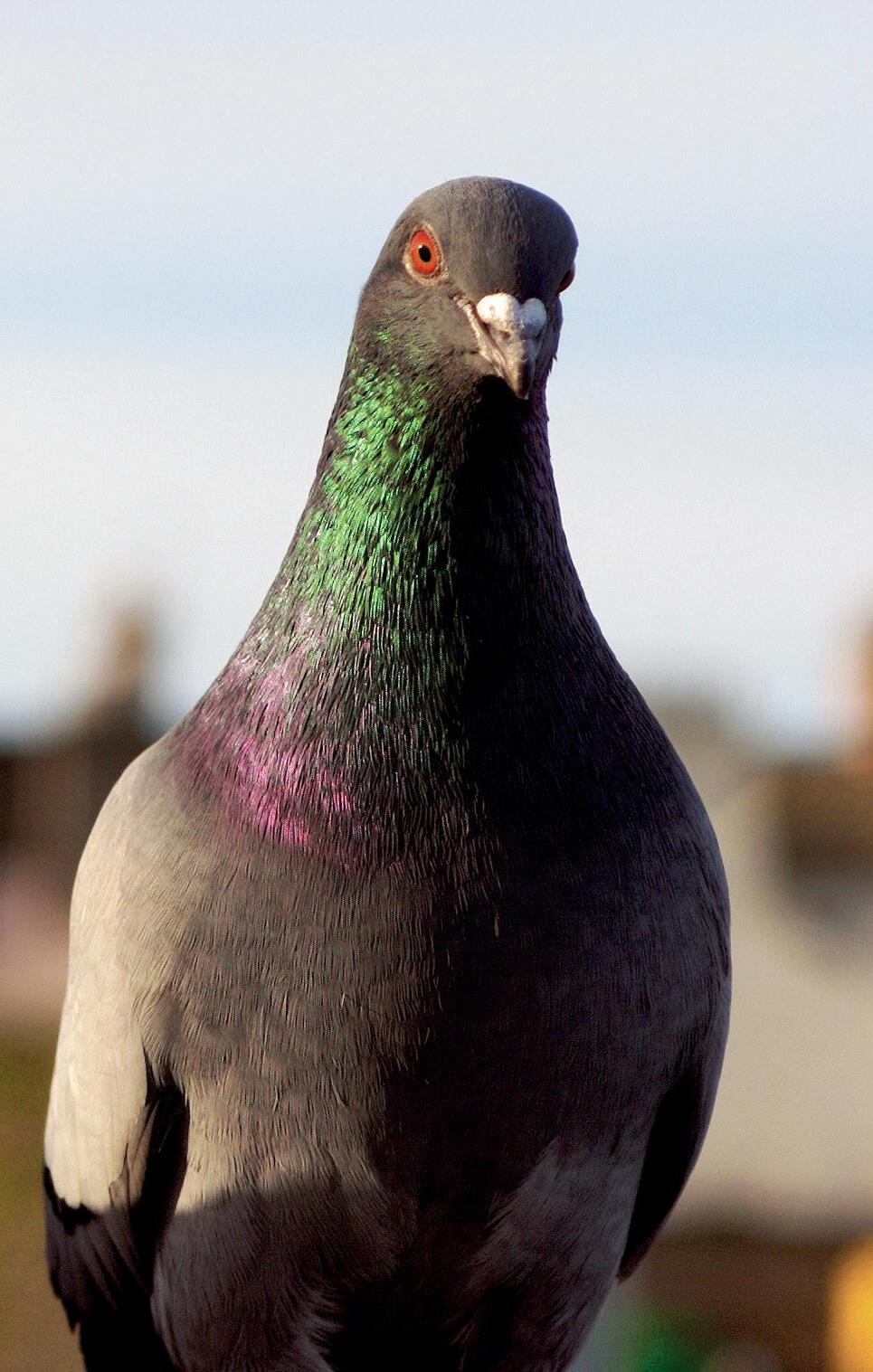
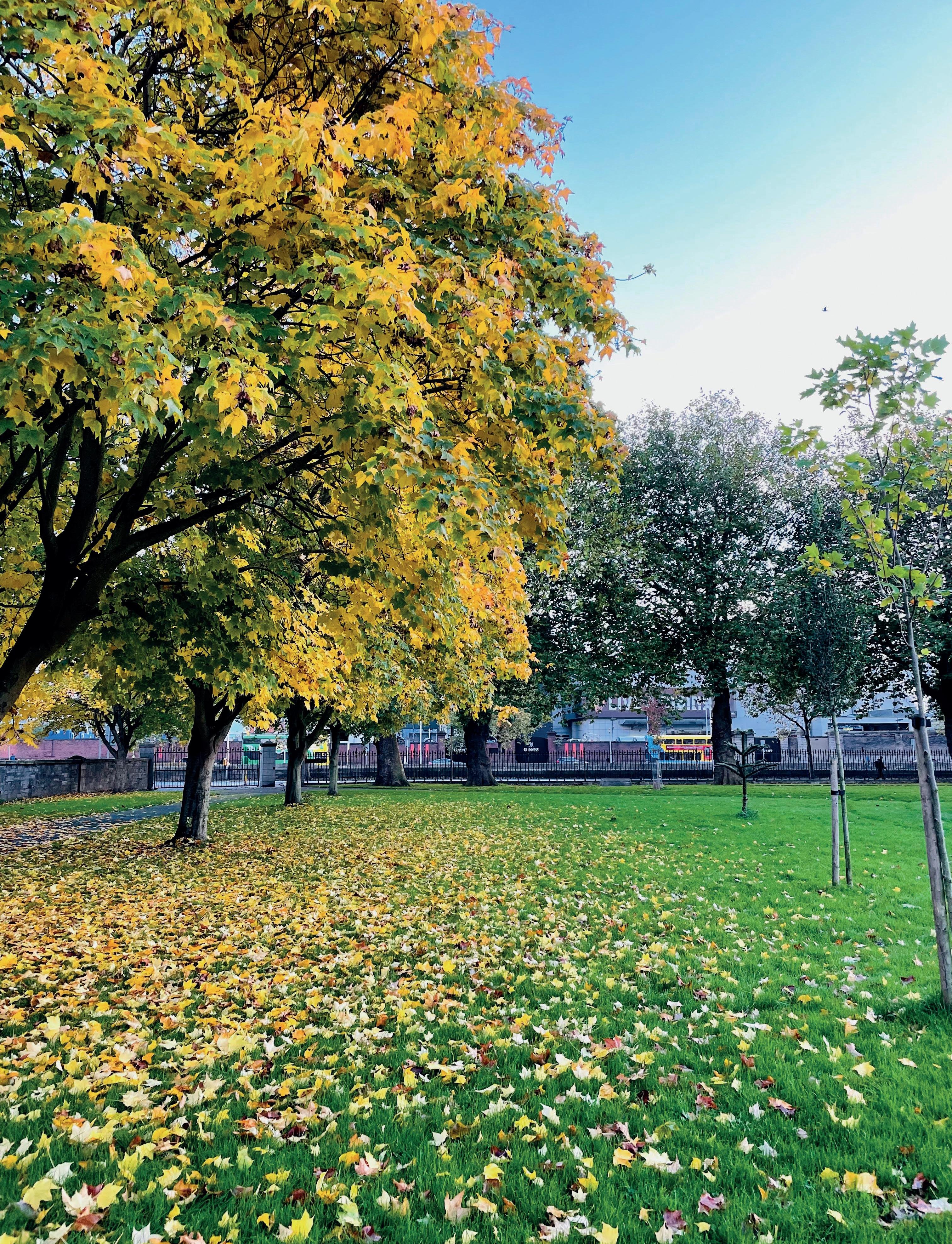
◂
PREFACE
Everyone knows if you want directions in Dublin City you ask a culchie. They are far more familiar with places in the city than most of the true Dubs. So, it is as a culchie that I undertake this task of writing about Dublin City’s wildlife – albeit as one who left her native county of Louth over fifty years ago and has lived here ever since.
Writing a book entitled Wild Dublin is surely an exercise in optimism. Who can ever know or record the presence of every single species? What this book sets out to do is to demonstrate the enormous variety of plants and animals that share our most densely populated urban environment. It has involved researching the immense body of work already published –‘standing upon the shoulders of giants’ as Isaac Newton famously said.
There is evidence that the Liffey banks were inhabited as early as AD 140, when the settlement was called Eblana. However, it was when the Vikings sailed up the Liffey in AD 841, and established their settlement Dyflin, downstream from the Gaelic river crossing Átha Cliath, that it became significant. By AD 988 the settlement was important enough to be made to submit its rulership to the High King Malachy II. Academic interest in wildlife, however, was far from the minds of those early inhabitants. It was not until 1650 that any observations on Dublin’s wildlife were published, when the flower Spring squill – Scilla verna – was recorded by John Ray, ‘at Ring’s-End near Dublin.’ Plants were considered worthy of mention in print from then on and there is a body of work on Irish flora that includes many references to Dublin’s plants from the eighteenth and nineteenth centuries. Records of Dublin’s animal life begin much later – that is if we disregard what poor gullible Giraldus Cambrensis wrote in his 1187 Topographia Hibernica about venomous animals not being able to flourish in Ireland. Animal records for Dublin date from John Rutty’s publication in 1772 – An essay towards a natural history of the county of Dublin.
Each subsequent work builds on what has gone before. New field work is carried out, changes are noted, additions recorded, absences lamented. Dublin City in the twenty-first century is a thriving capital city – yet it is truly amazing how much wildlife is still here.
The photographs of Anthony Woods, alongside those supplied by Fáilte Ireland, Shutterstock, Owen Beckett, Paul Campbell, Philip Duke, Chris Fusco, Ruth Hanniffy, Stephen Lee, Melinda Lyons, Nigel Motyer, Robert O’Leary, Gareth Toolan and Cong Yu, have enriched the book with striking images of everything from aerial Dublin, to stoats and wild orchids. Total dedication is required to capture wary urban wild animals.
Anthony’s photographic missions included scaling rock faces, wading through freezing-cold water, crouching for hours in back gardens, graveyards, woods, harbours and bridges. Not only did he encounter magnificent wildlife but also came across some fascinating individuals – a walk on the wild side in every sense of the word.
Badgers won’t emerge until they are perfectly sure the coast is clear. Full concentration is required to get a photograph. So, there was Anthony waiting patiently downwind of the sett entrance, suddenly realising that he was being watched suspiciously by a gang of teenagers in possession of a trolley load of drink. Sometimes discretion is the better part of valour.
Autumn colour, Wolfe Tone Quay in the city
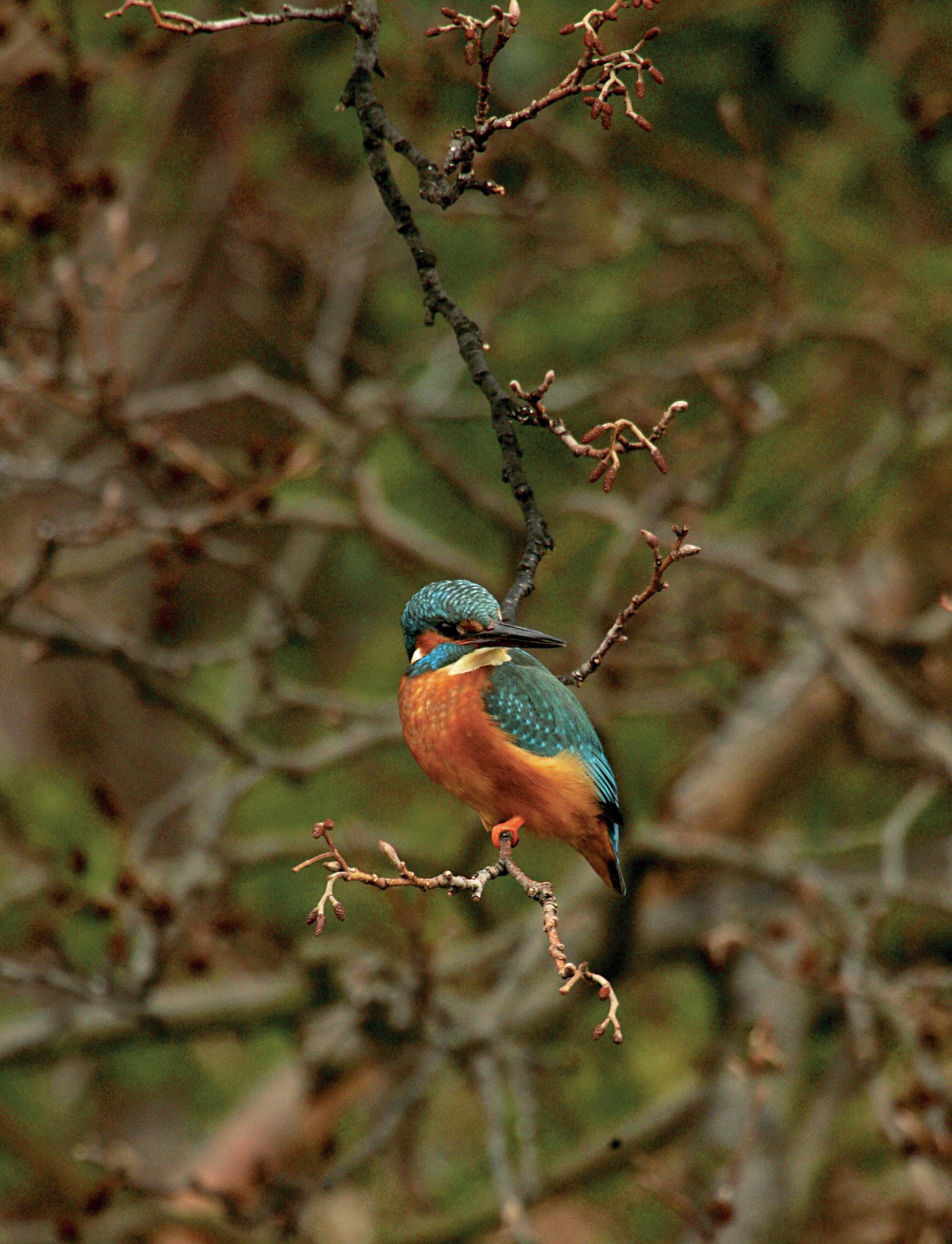
Early in the morning, very early, is the time to photograph foxes. Imagine his surprise on being approached at dawn by a man who tried to persuade him to embrace God and return to the fold. When such admonishments were getting nowhere, the man turned away and tried all the car doors in the nearby car park instead. Anthony didn’t dare ask!
There were daytime adventures too – photographing seals at the end of Bull Island, with permission from Dublin City Council, was such an absorbing task that he didn’t notice the swiftly returning tide. Suddenly the water was lapping round his ankles. He had to beat a hasty retreat with all his precious camera gear held high over his head, as the waters rose swiftly up around his chest. And Anthony also witnessed that badgers are not even safe during the day. He has seen people encouraging their dogs – quite illegally – to go down badger setts. His advice is not to go watching for wildlife alone at odd hours in remote places, the human wildlife might be more than you bargain for!
David Daly’s stunning drawings have ensured that the animals that steered clear of Anthony’s lenses appear in glorious colour. Mapmaker Keith Barrett of Design Image created clear yet informative maps
All in all, this book is the result of much cooperation and dedication. I hope that it will help you, the reader, observe and enjoy the surprisingly rich wildlife to be found in Dublin City.
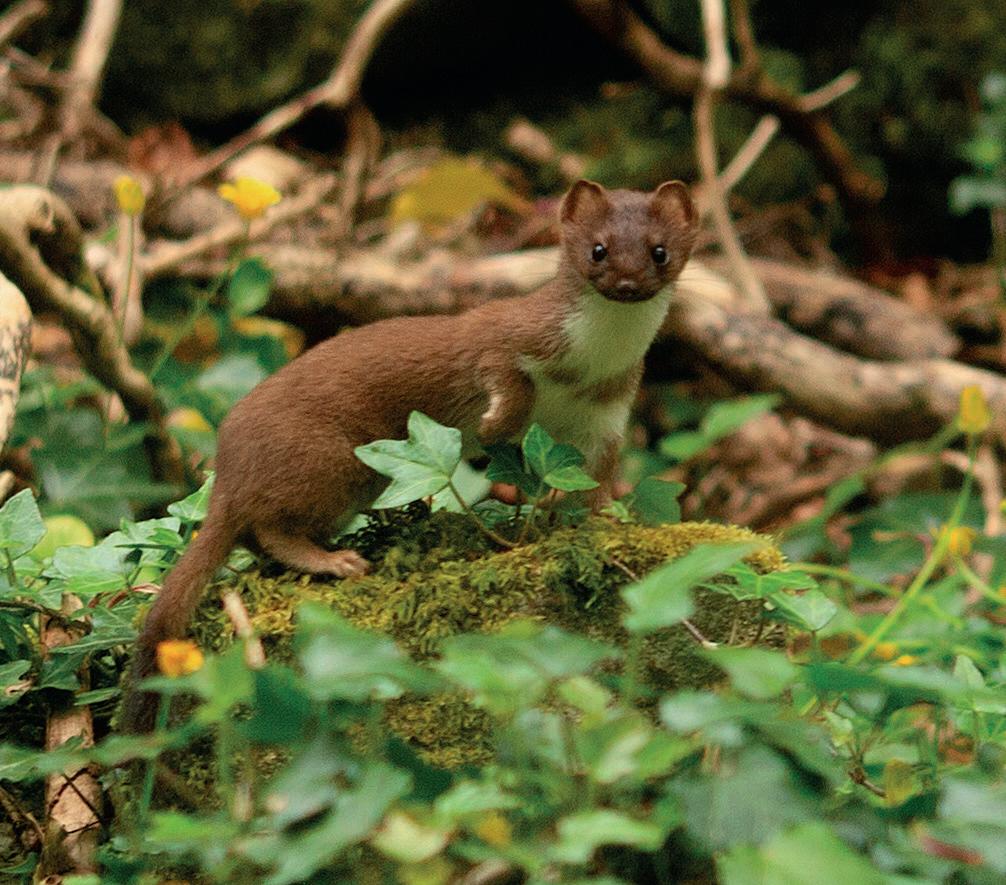
▸ Stoat
◂ Kingfisher

◂ Swans, Tolka Valley Park
PREFACE TO THIS EDITION
The Dublin area – particularly Dublin Bay – has had a great number of designations for the protection of its biodiversity. However, in 2015 it was awarded an international designation which encompasses all the earlier designations. The whole of Dublin Bay was designated Dublin Bay UNESCO Biosphere Reserve – one of only two UNESCO biosphere reserves in the country. The other is in in Killarney in County Kerry. This has meant that Dublin Bay is now officially a place where people are encouraged to get involved with nature. Dublin City is being actively managed to promote a balanced relationship between people and nature.
Since the first edition of this book in 2008 the population of Dublin has got out and about more. This was particularly noticeable during the Covid pandemic from 2020 to 2022 and it has continued since, helped in no small way by the increase in parks, greenways and riverside walks co-ordinated by Dublin City Council. It is now possible to walk along the banks of both canals, along much of the Tolka and the Dodder as well as along the Liffey. Recently enhanced parks include Tolka Valley Park, Bridgefoot Street Park as well as the opening up of the interlinking gate between the Botanic Gardens and Glasnevin cemetery. The greenways stretch all along the north side of Dublin Bay, through Clontarf and along by the north side of Dublin Docks.

▸ Tolka Estuary Greenway
▾ View of the greenway in the Docklands


Map showing Dublin City Council boundary in red
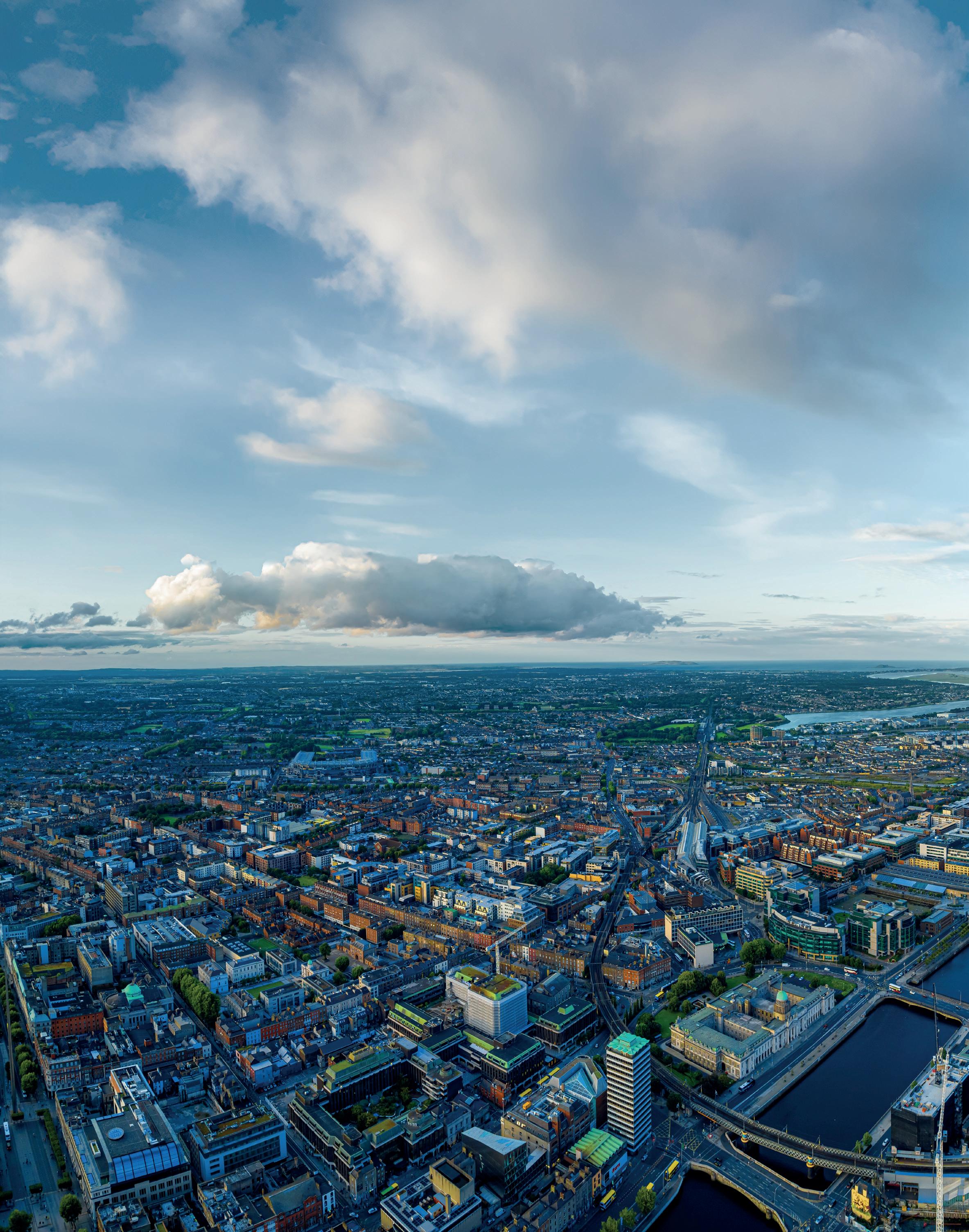

INTRODUCTION
Dublin is a city of almost 1.3 million inhabitants according to the latest Central Statistics Office figures. Of these almost 600,000 live in the Dublin City Council area. The M50 motorway forms a definite boundary to the urban centre of our capital city. The whole of the Dublin City Council area of 115 square kilometres is located here. Small portions of Fingal and South County Dublin districts, as well as Dún LaoghaireRathdown, also lie within this apparently arbitrary boundary. However, because this busy motorway forms a definite barrier to the movement of plants and non-flying animals it is considered to be the boundary of Dublin City, from a point of view of wildlife. On the face of it, it is hardly an area where a huge variety of wildlife might be expected to occur. However, Dublin City contains a remarkable variety of both plant and animal life.
Aerial shot of Dublin towards Dublin Bay
Ireland, because of its geographical location as an island on the north-west of Europe, has quite a small biodiversity of plant and animals relative to larger mainland European countries, and indeed, relative to its larger neighbouring island too. What is amazing is the number and variety of plants and animals that occur within the confines of Dublin City.
There is an official Irish List of all the wild plant and animal species in Ireland. This list is being continually updated as their distribution changes and the task of doing this lies with the National Biodiversity Data Centre in Waterford.
Take our mammals for example; we have a total list of thirty-three land mammals in Ireland.
Of these, a remarkable twenty-seven species occur in Dublin City (see checklist in Appendix). At least another five species of sea mammal can be seen in and around Dublin Bay.
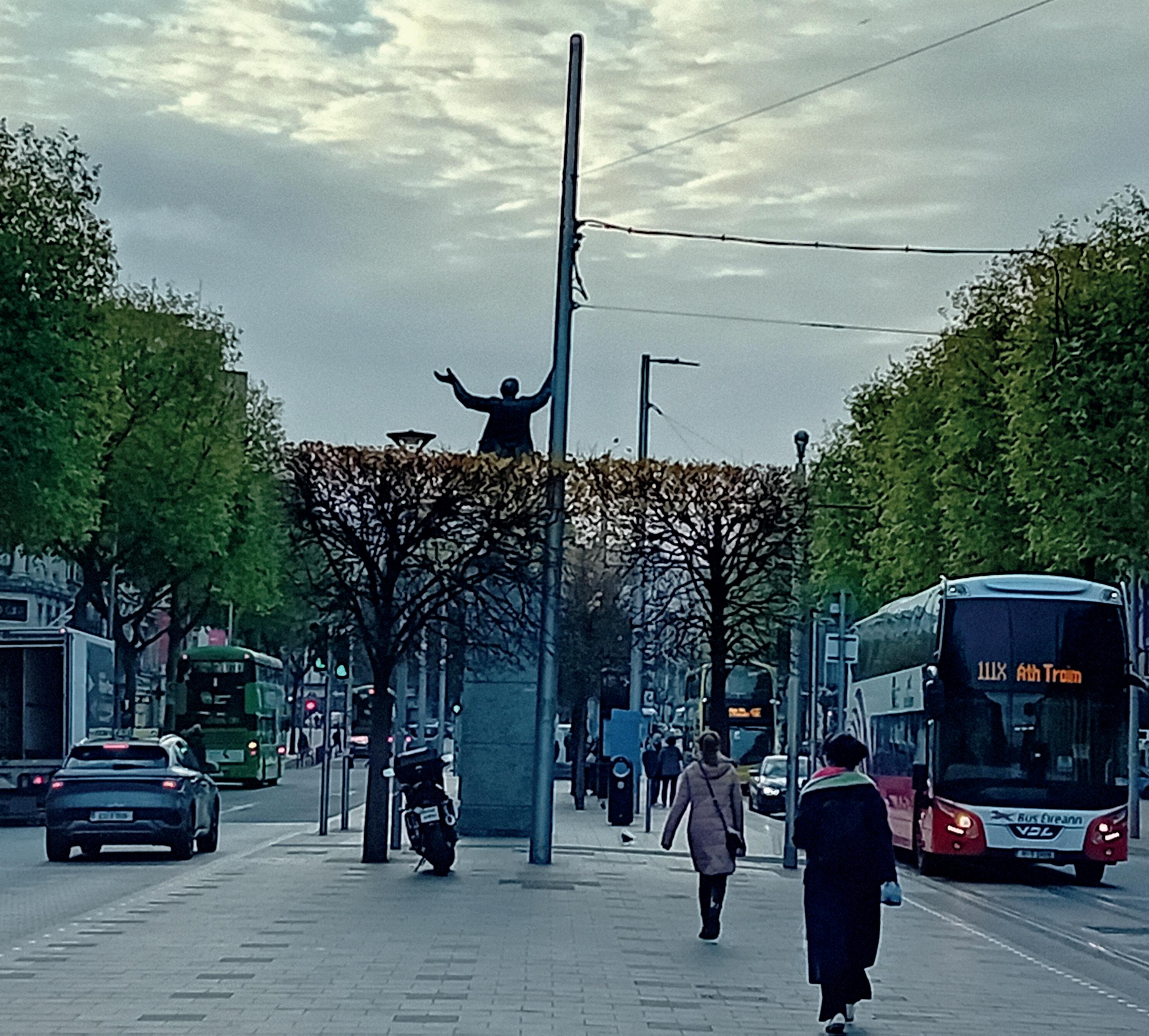
▾ Trees on O’Connell Street
18 WILD DUBLIN
Birds, of course, are not constrained by vehicles or motorways. There is a total of 475 species of bird on the Irish List. This includes birds that only ever occurred here once or were blown off course during migration and were given the dubious pleasure of visiting our island; of this total 255 bird species have been recorded as occurring in the Dublin City area (see checklist in Appendix). This may seem an amazing number, but many passage migrants and vagrants blown off course are spotted along the Dublin coastline by enthusiastic birdwatchers. Some of these may only have been recorded once.
The other three vertebrate groups of animals are reptiles, amphibians and fish. Ireland boasts only one native species of reptile, the lizard, and it counts Dublin City as a place to live – to the amazement of householders who encounter one in their gardens. We have three amphibian species on the Irish List – of these the frogs and the newts are recorded as part of the Dublin fauna. The Natterjack toad is the only Irish amphibian not recorded in Dublin, as it is a Lusitanian species that occurs only on the Dingle peninsula in Ireland, and then in Spain and Portugal.
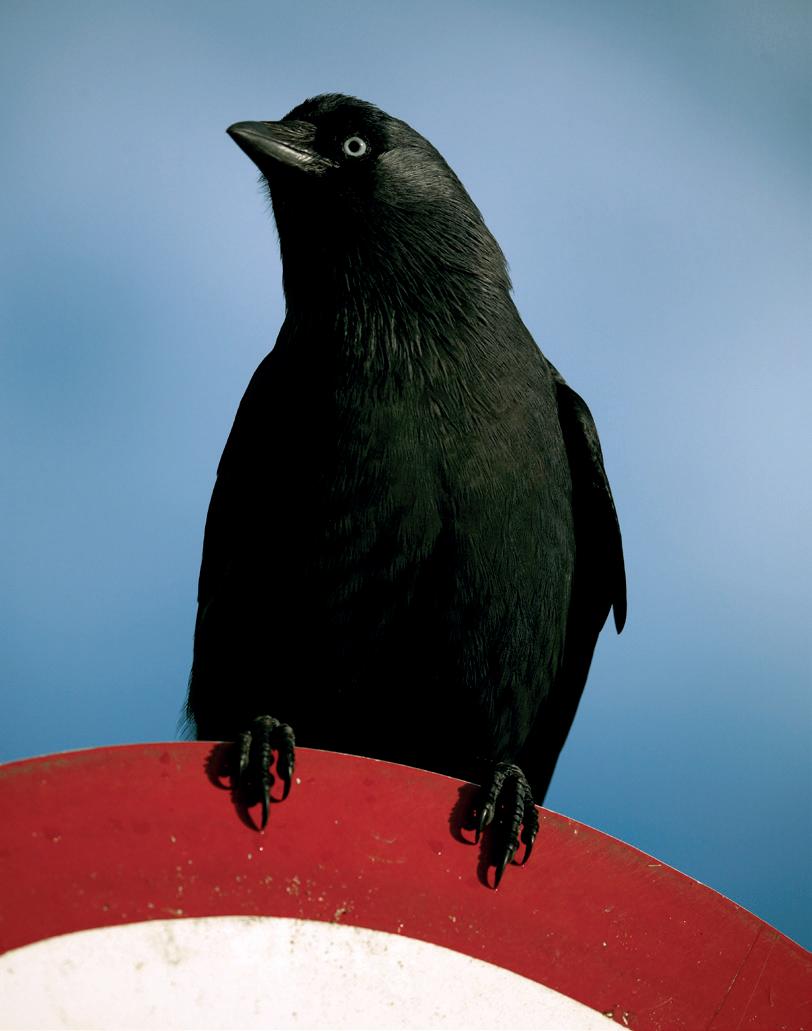
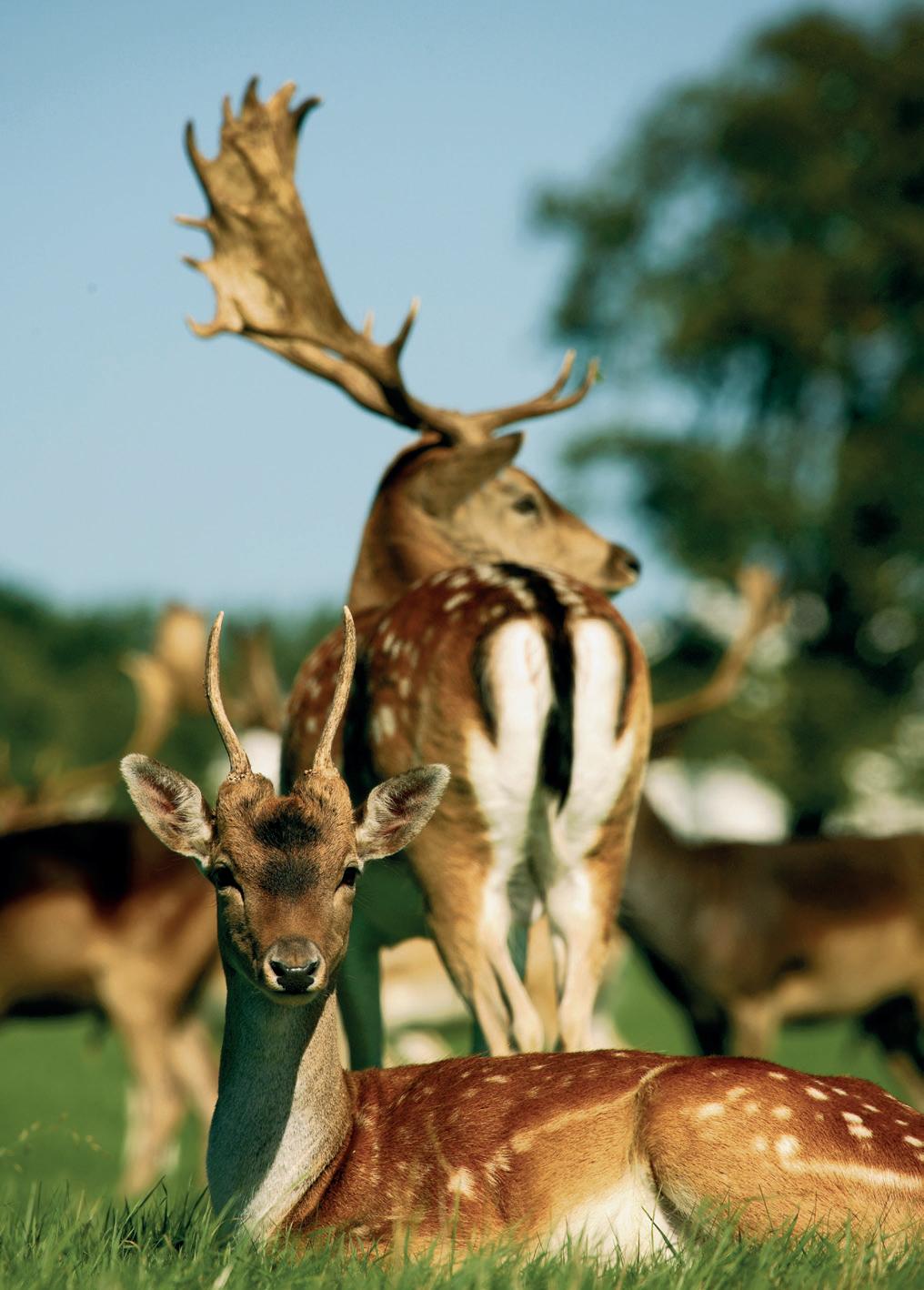
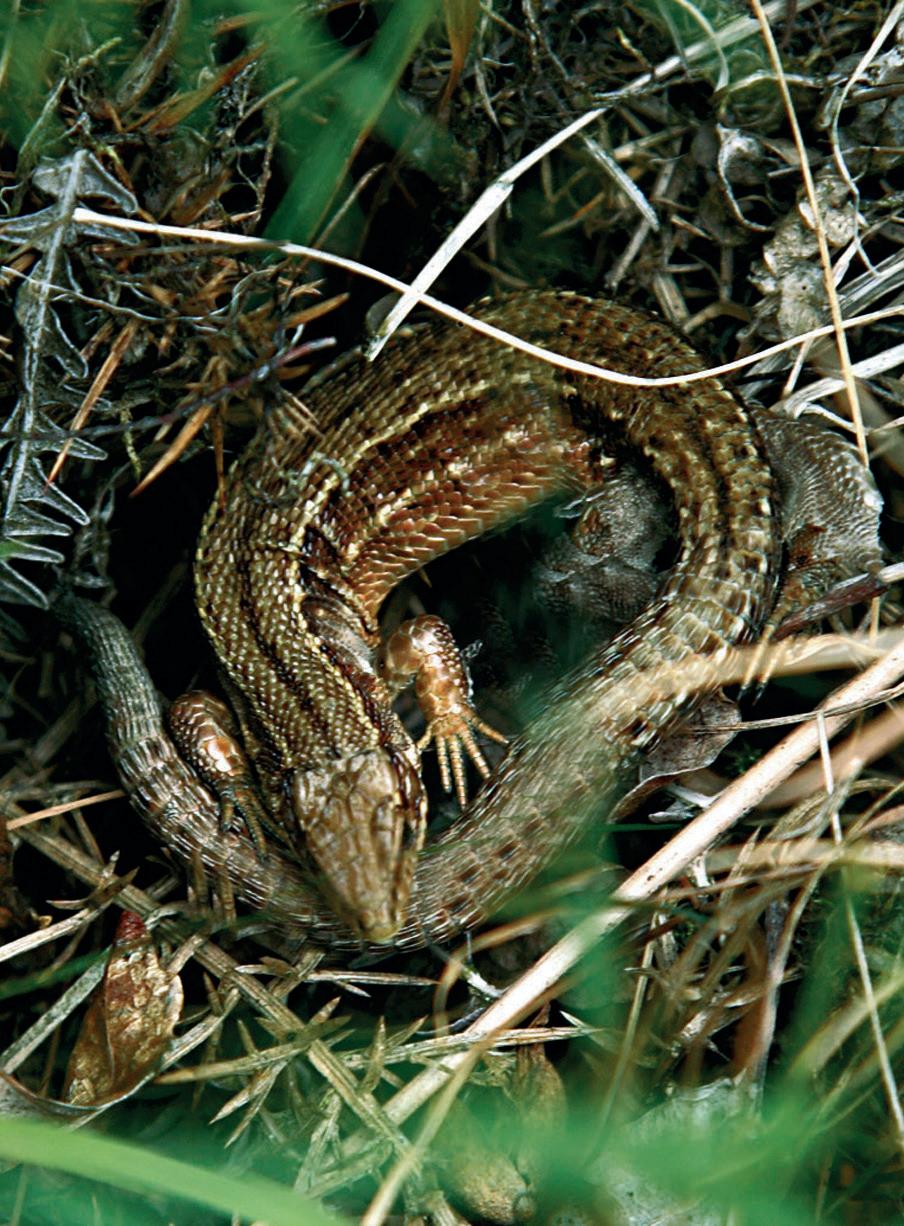
▸ Young and mature deer, Phoenix Park
▸ Jackdaw perched on sign, city centre
▸▸ Lizard, Airfield House

Two canals (the Royal and the Grand) and three large rivers (the Liffey, the Dodder and the Tolka) as well as a number of smaller rivers flow through Dublin City. The water quality varies in all these rivers with the Owendoher having the best and the three streams in the area of Merrion and Blackrock being the worst. Overall, a wide variety of freshwater fish occur. Native fish such as salmon, trout, eel, stickleback, minnow, stone loach and lampreys all occur (see checklist in Appendix). Rudd, perch, roach, pike, tench, carp and bream have been introduced and are fished for most enthusiastically by city dwellers, who often return them alive.
Dublin lies in the driest part of Ireland and the urban infrastructure, with its concrete brick and stone, raises the temperature to give an urban microclimate, which is somewhat warmer than surrounding non-built-up areas.
This all has an impact on plant life. Over 1,300 plant species have been recorded for the whole of County Dublin (Flora of County Dublin, 1998) and of these 358 species were recorded as occurring between the Royal and Grand Canals during a survey carried out in 1984 (Flora of Inner Dublin). Leaving grassy areas unmown during the month of May contributes to increased biodiversity in these areas. There have been many post-Covid initiatives to improve local areas for biodiversity as Dubliners became much more familiar with their immediate surroundings as a result of the several lock downs in 2020 and 2021.
Dublin also has a fine collection of mature trees. Long-established buildings have excellent examples of mature trees in their grounds, and indeed some of these remain when the original big house is no longer apparent. The fine stand of yew and arbutus in the small front gardens of houses on Grosvenor Road is older than the houses in whose gardens they now grow. They are a souvenir of a time when trees were valued, and indeed when developers were careful to leave them intact during building operations. The Box elder in a garden in Leeson Park road in Ranelagh is the second-greatest-girthed tree of its kind in the country, while the biggest Silver maple in Ireland is found in the People’s Garden in the Phoenix Park.
◂ Chestnut trees along the lakeside, Bushy Park
As might be expected, there are fine specimens of trees in the Botanic Gardens, in the grounds of Trinity College and on the grounds of a former hotel in Ballsbridge which was once part of Trinity College’s Botanic gardens.
There is a wide variety of habitats in the city area where wildlife can thrive quite happily. Private gardens, parks and graveyards all harbour a multitude of species. There is an amazing 19.6 kilometres of intact hedgerows still left in Dublin City which contain all the typical wild hedgerow plants as well as oak, holly, hazel and crab apple in the tree layer. The coastline has mud flats, saltmarshes, sand dunes and rocky sections. The rivers, canals and various ponds are home to wetland wildlife. There are thousands of different invertebrate species, between marine creepy-crawlies and land-living mini-beasts; of our thirty-five butterfly species twenty eight have been recorded in Dublin City (see checklist in Appendix). Twenty species of dragonfly (out of a total of thirty-three species found in Ireland) have been recorded here. Of the twenty-eight woodlouse species occurring naturally in the wild in Ireland, no fewer than nineteen different species have been discovered lurking in various habitats in Dublin City (see checklist in Appendix). There are countless records of bees, wasps, moths, beetles and mayflies, with the evidence, in many cases, on show in the Natural History Museum on Merrion Street. So if it is wildlife you are after, you are in the right place – Dublin City, Wild Dublin!
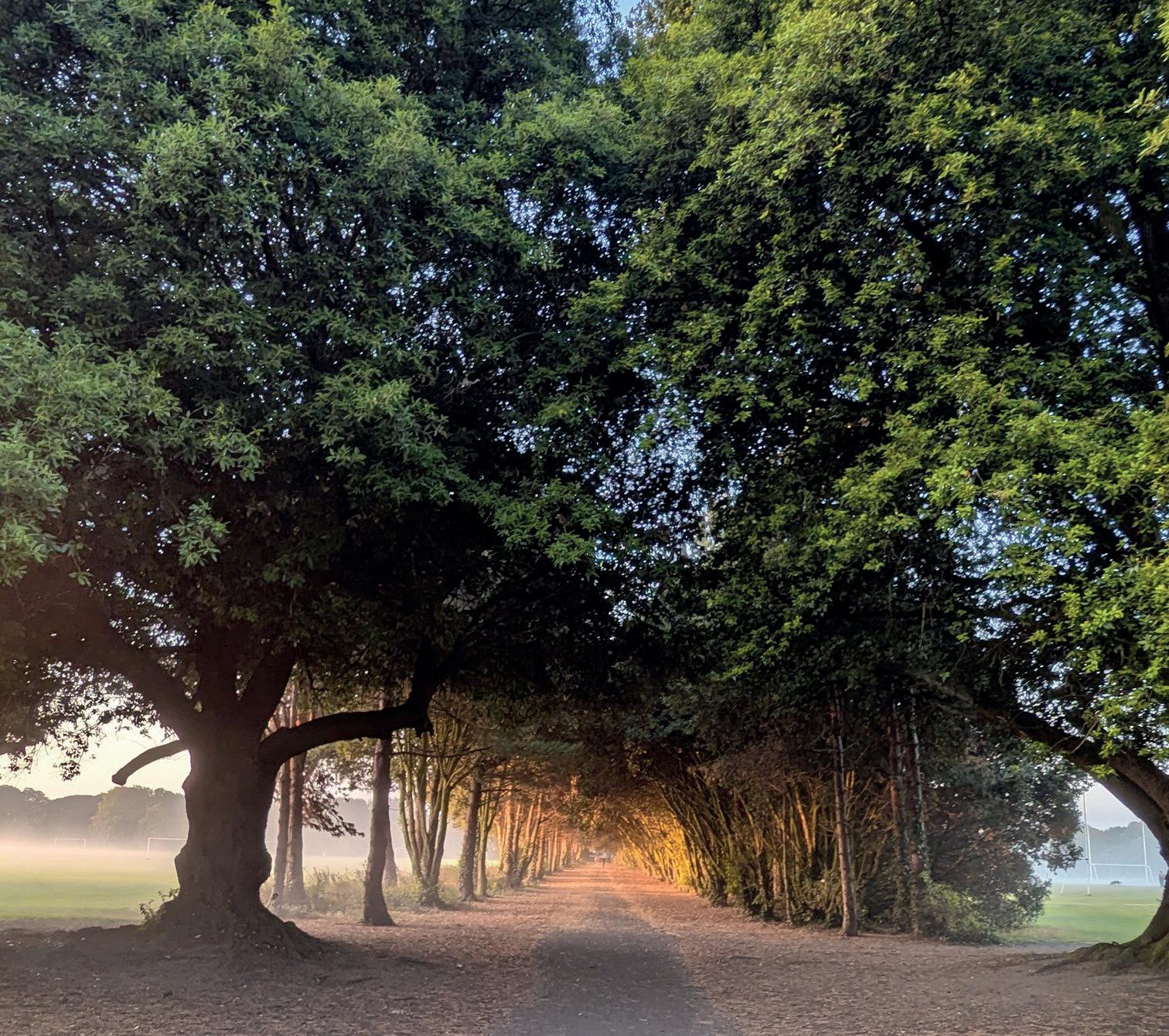
▸ Tree-lined avenue in St Anne’s Park
